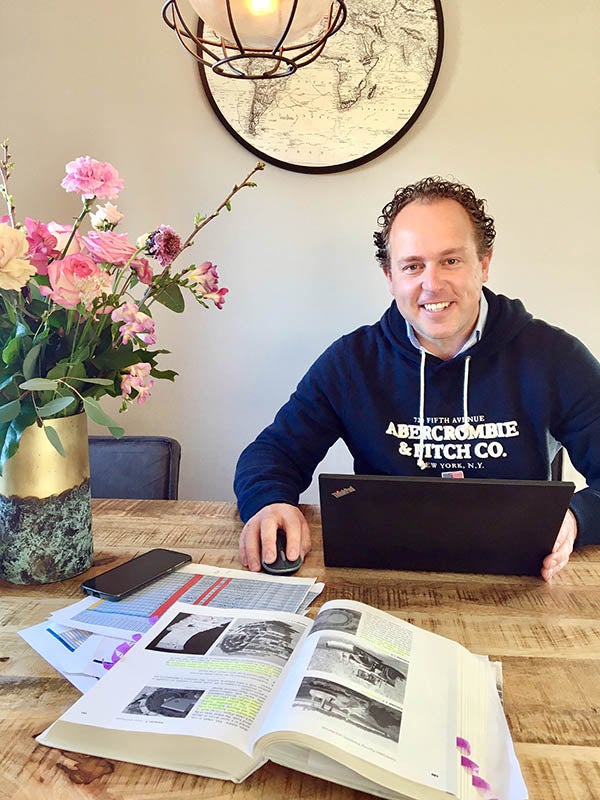Construction management professor teaching ECU students from the Netherlands
Dr. Marwin Jurjus came to East Carolina University as part of a faculty exchange program with HAN University of Applied Sciences in the Netherlands.
At ECU for less than a year, the professor in the Department of Construction Management in the College of Engineering and Technology returned to the Netherlands in March to be with family as his mother-in-law battled and eventually succumbed to the coronavirus.
While helping his family in the Netherlands, Jurjus received kinds words of support from his new ECU colleagues.
“It meant a lot to me and all of our family,” he said “It’s been a rough time the last few weeks.”

Dr. Marwin Jurjus is shown working in the Netherlands. Jurjus is teaching his construction management courses after returning home to support his family during the coronavirus pandemic. (Photo contributed by Marwin Jurjus)
Through it all, Jurjus has continued teaching his ECU students as the university transitioned to alternative course delivery.
“Online teaching is new to us. Everyone is in the same position,” he said.
Jurjus did have some online teaching experience. During the fall semester at ECU, he taught students in the Netherlands while in Greenville.
“This was my first real experience with remote online teaching,” he said. “In the beginning it took a lot of getting used to for the students, but also for me as a teacher.”
Jurjus said he is finding success teaching online using Microsoft Teams. He said he likes how the program allows for face-to-face interactions and how students can view the recorded class sessions at their convenience.
“I was looking for a way to fit best for the students because normally we have face-to-face education, and we see the students twice per week,” Jurjus said. “I was wondering if they were still interested in seeing the professor or do they prefer to get all the information from Blackboard or Canvas. I tried to make a mixture of direct, face-to-face lectures with the students.
“I think the students like it that they can see the teaching instructor and ask directly the questions they have. I think the first class session was an hour or an hour and a half, so for students I think it’s tough to listen for so long, but it’s also tough for me to talk so long. I’m still looking for that mixture, but the students started on a project and they had a lot of questions, so it’s more interactive now.”
Beyond video conferencing with Microsoft Teams, Jurjus also has office hours in which students can virtually chat.
“They can log in to see and talk to me,” he said. “We don’t only talk about the course, but also how they are doing and how the situation is in Greenville, but also in the Netherlands. As you can see, I love to use the video option. As far as I am concerned, this is essential to keep in touch and stay connected with the students.”
Jurjus knows that each individual student learns his or her own way so he wants to provide as many methods to promote success as he can.
“I think it is too early to make a definitive statement about this, but it seems that a combination of self-study, face-to-face instruction, online assignments and time to ask questions with office hours is a combination that works for both the student and the teacher,” he said.
Jurjus believes that this different way of teaching — and learning — will be helpful to both faculty and students in the end.
“I am always looking for new opportunities to keep the students fresh and to bring variation in the way of increasing the learning efficiency of students,” he said. “This whole coronavirus situation forces us to walk new paths — exciting but also very challenging. My expectation is that the old-fashioned fixed educational system will get a big boost by all the experiences we gain together within the framework of the online possibilities.”
-by Ken Buday, University Communications